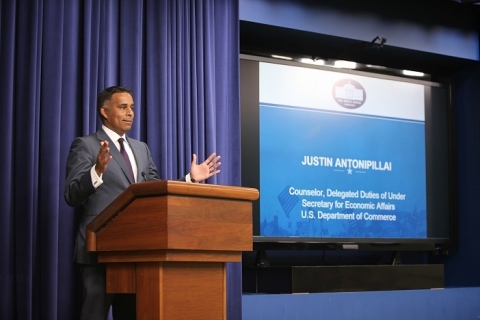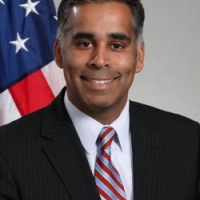Oct242016
Posted at 12:36 PM
Post by Justin Antonipillai
In 1956, an assistant professor at a university failed, and failed memorably, when trying to invent a "heart rhythm recorder." The failure occurred when, in trying to complete a circuit, he reached into his equipment box and grabbed the wrong sized resistor. A "Heart Rhythm Recorder" would need to be silent and very sensitive, but his "Wrong-Sized Resistor" model produced a pulse that made it impossible to record faint heart rhythms.
Were it not for this significant "failure," that assistant professor, who has one of the best names in the records of innovators -- Wilson Greatbatch -- would not have invented one of the more important cardio health products of the last century... the Pacemaker. You see, Greatbatch noticed that the interfering pulse also happened to mimic the heart rhythms themselves. And it is that pulse that thousands of people now rely upon for their pulse of life. The New York Times obituary for Mr. Greatbatch noted that he was a perfect example of Pasteur's observation that "chance favors the prepared mind." Greatbatch, by the way, is named in more than 300 patents, including lithium batteries.
I have been lucky to serve under a President and a Secretary of Commerce who have the vision to allow and promote "failure" on the path to innovation. Our leaders on the data front -- like Ed Kearns at NOAA, Jeff Chen at the Commerce Data Service, and Tom Beach at PTO -- need to have the freedom to explore a few blind hallways in order to make something great.
And so I deeply appreciate the chance for the ESA team to join in celebrating Innovation Month at Commerce, because so much of our daily work and mission to open and democratize data demands innovation, and requires that we create the conditions that will promote innovation in the Department and in the private sector.
When it comes to open data, we have been driven to wrangle and present our valuable data so that innovators will be willing to try (and sometime fail) in creating magic.
For a specific example, here at the Commerce Department, we "failed" a few times and often by design. Consider the Commerce Data Usability Project. The original goal was to make Commerce data more useful and accessible to developers and software engineers through visually engaging tutorials. The Data Usability Project was one of the first projects of the Commerce Data Service and we had bold goals of building a suite of tutorials to address the high-value data sets from throughout the numerous sectors touched by the Department, such as weather, small business growth, trade and intellectual property. So, in classic agile fashion, we rapidly built prototypes and delivered them to the market.
In those early experiments we learned from two specific “failures”. First, we weren’t always choosing truly “high value” data sets as measured by different user groups and second, we weren’t able to scale out the development of our tutorials as fast as we wanted. So what did we do? We open-sourced the development of additional tutorials. We put the style guides and tutorial protocols on Github and encouraged companies, educational institutions and non-profits to build tutorials themselves. A key condition of these collaborations was that all the data and tools had to be freely available to the public. You can see the results of this product here.
Those lessons we learned through preparation, failure, and hard work have produced exactly the innovation we are living for. And, just this month, the Commerce Data Usability Project won the FedScoop 50 "Innovation of the Year” award for “technologies implemented this year that may have been unfathomable until recently.”
Whether it’s "hacking the pay gap," connecting people with jobs, training or housing, finding families in need to better serve their needs, helping farmers plan a crop harvest with weather forecasts, or developing the Amazon Echo Alexa skills – in just the last month, we have challenged the private sector to help us drive innovations for nonprofits, charities, and small and medium sized entities.
We have been really excited to see how the private sector has helped us make our data more accessible and usable, and put it to work. Right now we’re kicking around new innovations with digital/data pioneers that are grabbing our data and running with it. Socrata, for example, is working with us to load new Census data sets into their free and open platform, which will allow policymakers and advocates to better visualize, for example, localities where health insurance coverage is low and needs assistance to help affordable insurance companies reach and serve them. Moreover, the National Oceanic and Atmospheric Administration (NOAA) has released the NEXRAD archive inventory as a reference for users as part of NOAA’s Big Data Project.
The famous observer of our young nation, Alexis de Tocqueville, wrote in the early 1800s, “I cannot help fearing that individuals may reach a point where they look on every new theory as a danger, every innovation as a toilsome trouble, every social advance as a first step toward revolution, and that they may absolutely refuse to move at all.”
De Tocqueville need not have worried so much. (For one thing, at the time, US patent examiners were handling an explosion of inventions and innovations.) More than a toilsome trouble, “human ingenuity and very personal passions,” as White House CTO Megan Smith said, continue to drive innovations across the nation, and they are alive, well, and evident every day at Commerce.


